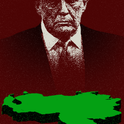Early in the first series of The Sopranos, Christopher Moltisanti, aspiring gangster and aspiring screenwriter, spots Martin Scorsese at a nightclub. “Marty!” he shouts from a distance. “Kundun, I liked it!” That Christopher, the show’s least zen character, would pick out Scorsese’s critically panned life of the Dalai Lama is a witty touch. It’s also of a piece with Sopranos creator David Chase’s less than reverential attitude towards old-style gangster movies like Scorsese’s Goodfellas (in which Michael Imperioli, who played Christopher, was shot in the foot—a scene parodied in the TV show), Scarface and The Godfather. Tony Soprano and his crew are the kind of obsessive fans who repeat the famous lines to each other, burgeoning their mafia credentials with movie glamour. But Christopher is no Al Pacino and Tony no Marlon Brando. Tony, at least, knows it. He complains to his therapist Dr Melfi that he feels he “came in at the end,” when the glory days of America—and American crime—were over. The Soprano crew are a grubby lot, mooching around a down-at-heel strip club in unfashionable New Jersey, while across the turnpike in New York the five families make the real money.
The new Sopranos prequel, The Many Saints of Newark, tries to recreate those alleged glory days—and in doing so it falls completely flat. Set in the late 1960s, the film follows Christopher’s father Dickie Moltisanti (Alessandro Nivola), whose sleek good looks resemble Pacino’s. Dickie is, like Tony, a conflicted gangster: a charmer, a philanderer (with his father’s wife, no less) and a murderer of those closest to him. He is also trying, in some vague sense, to be a better man. For a while he even gets on well with Harold, an African-American crook later inspired by Black Power rhetoric to go to war with the Italians.
But our view of Dickie is altogether too superficial. In the flashback scenes to this period in The Sopranos, there was always a golden haze over the streets of Newark—endless summers set to a Motown soundtrack. Here we get that for the length of a movie. (New Jersey’s own Dionne Warwick is name-checked.) While we saw Tony eat, sleep, take drugs, cuddle, negotiate, kill, fuck and sing along to Steely Dan in his car, we only ever see Dickie lust after his young step-mother, and commit the usual litany of mob atrocities.
For ultra-Sopranos fans, the kind who put together YouTube videos of the funniest lines (I’ll admit, I’ve watched them), there will be a thrill in seeing the show’s backstory filled out. There’s young Paulie fastidiously examining his fingernails and Silvio struggling to keep his wig in place; there’s Janice, Tony’s sister, at her confirmation, a few years before she becomes a hippie re-named Parvati. Uncle Junior even tells Tony that he “never had the makings of a varsity athlete,” a line from the TV show that has taken on the tediously iconic status of Monty Python’s “This is an ex-parrot.” (It’s invariably quoted in YouTube comments.) The problem is not only that for those coming to the movie fresh whole scenes make little sense; it’s also that Chase, who once demythologised gangsters, has now fallen in love with the world he created.
Think of it as the Marvel-isation of The Sopranos. (If this is a success expect a whole extended universe of origin stories. If we must, I vote for Artie Bucco’s sous-chef days.) Neat lines are drawn between traumatic childhood experiences and later bad behaviour. When Dickie starts ignoring him, Young Tony (played by William Ludwig and then Michael Gandolfini, James Gandolfini’s son) takes his anger out on a friend and the young Carmela. A terrible monster is born! The TV show was much subtler. Whenever Tony talked about his youth to Melfi, there was always a strain of false memory and self-exculpation. Psychiatry became a way to salve his own conscience. More than once, Tony learns tactics he has gleaned from Melfi about, for example, how to deal with his difficult mother Livia, and applies them to his mafia dealings. The question hovering over the show is: does Melfi simply want to make him a better gangster?
Speaking of Melfi, the female characters in Many Saints are not a patch on their later incarnations. Carmela, Janice/Parvarti and Meadow are all interesting, flawed people who give as good as they get with Tony. Here the female lead is a fantasy figure from Italy who barely speaks English, and is wholly reliant on men. There is nothing here to match the extraordinary arc of Christopher’s girlfriend Adriana, who starts the show as light relief—a restaurant hostess who wears big-hooped earrings and has unrealistic ambitions to be a band manager—and ends it five series later as a tragic heroine.
As for sons and fathers—or father figures—the same themes are explored but in cruder, truncated form. Tony and Dickie have some heart-to-hearts but nothing to match the TV show’s delicacy. When Tony’s son AJ is told by his older sister what their father does for a living, he can’t believe it. At a funeral, though, as he leans on a tombstone and observes his father being greeted as the new boss, the realisation dawns that he shares him with another “family.” Tony winks in reassurance; AJ stares back impassively, his innocence lost. Moments like that, full of ambiguity and emotional truth, are why The Sopranos is great. David Chase made a mistake in giving his characters the full Hollywood treatment: the small screen suited these small men.












